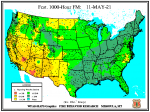PHD-455 Tussock UPDATE 2
for those playing at home....
A/G Secondary = 167.1750
LOG RPT IN = 168.100
LOG UHF link = 406.5875
for those playing at home....
A/G Secondary = 167.1750
LOG RPT IN = 168.100
LOG UHF link = 406.5875

PHD-455 Tussock UPDATE 2
for those playing at home....
A/G Secondary = 167.1750
LOG RPT IN = 168.100
LOG UHF link = 406.5875
PHD-455 Tussock
Type 1 team in place this evening.
Rotor Freq 134.025
New A/G 169.925 not in use yet
@es93546
LOG = Logistics; CMD = Command
So I heard them testing this morning on 170.450 , calling it "Logistics". I turned on my other radio and tracked down 168.100 with the same traffic and CTCSS. The third radio (yeah I know) is scanning the known NIFC cache freqs, and hit on 406.5875. Its the same traffic on all three.
They are calling170.450 'Command 9' on the radio (likely based on the channel slot in the IC405 which I haven't seen yet). Techs are testing now and I'm hearing same traffic on VHF and UHF link. (The tech at ICP also is hearing himself on the UHF link). [The whole conversation started because one tech heard a lot of carriers "kerchunking" and was checking to see if someone was having trouble hitting the repeater]
The techs talking also mentioned CMD 8 as a simulcast of CMD 9, but I haven found it yet.
FYI: I may use a 'logger' (Proscan to be specific), but I don't rely on just the loggings or recordings to post. I'll use the logs to find potential freqs, but I only post what I hear and can verify. So I 'verified' the channel names based on actual traffic heard.
Tussock Fire
Two Superscoopers now working the fire as of 1540. Scooper 263 and Scooper 261.
134.025Is the rotor frequency 134.025 or 135.025? Both are listed in successive posts.
John
Peoria
Is the CAP connected to Lake Pleasant? Yes. The CAP pumps water into the lake as a storage vessel during the fall and winter months and is released in the summer. The remaining water comes from hydrogeologic runoff from the Agua Fria River.

Scoopers SCPR261 and SCPR263 are working Primary A/G on 168.400 while on station today.
I drove out to the lake earlier just in time for them to head back to Falcon for fuel. Now 90 minutes later they're back. There's also a fire command city setup at Ben Avery on Carefree Hwy. There's at least two dozen tents, lots of support vehicles and food trucks there.

